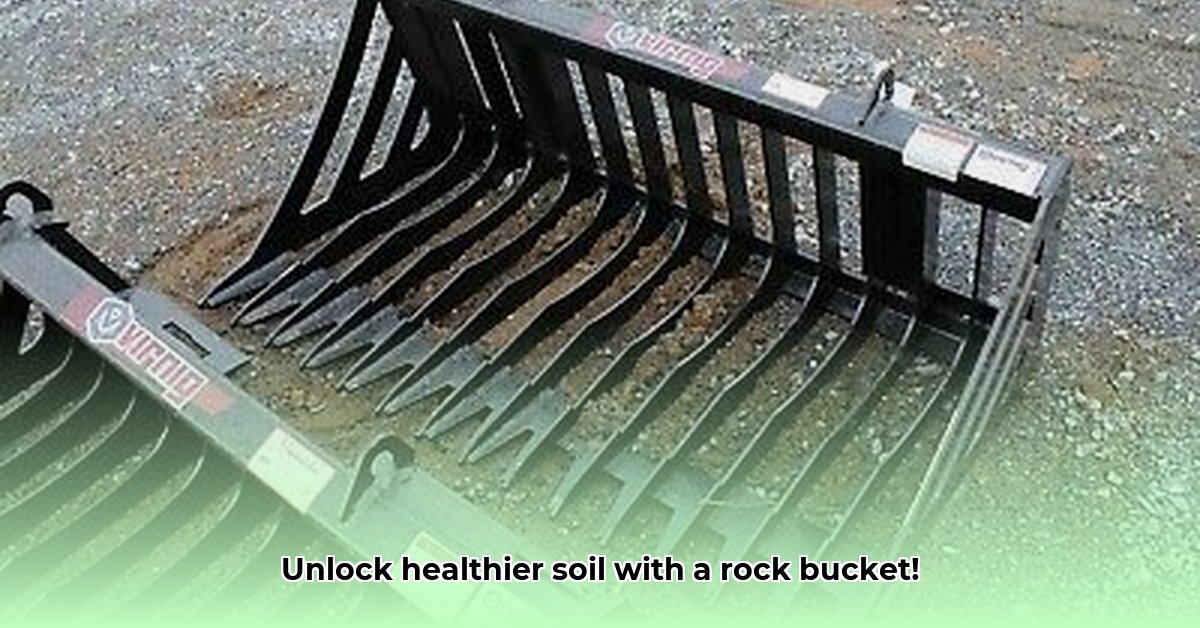
Removing rocks from your fields is crucial for improving soil health and boosting crop yields. A rock bucket for your compact tractor offers a powerful and efficient solution. This guide will help you choose the right bucket and use it safely and effectively. For more on compact tractor attachments, check out this helpful guide on box blade options.
Understanding Rock Bucket Options for Your Compact Tractor
Various rock buckets cater to different needs. Choosing the right one depends on your tractor's capabilities, the type of soil you're working with, the size of the rocks, and your budget. IronCraft, for example, offers both compact and heavy-duty buckets. Their "X-treme" bucket is designed for large farms and large rocks, whereas their compact models are better suited for smaller farms and lighter-duty rock removal. Unfortunately, a direct comparison with LandPride is difficult due to limited publicly available specifications. Ideally, detailed specifications like tine spacing, bucket dimensions, and material composition would be readily available from all manufacturers to aid in a more informed purchasing decision.
Choosing the Right Rock Bucket: A Step-by-Step Guide
Selecting the perfect rock bucket involves careful consideration of several factors. Follow this step-by-step approach:
Assess Your Tractor's Capabilities: Consult your tractor's manual to determine its lifting capacity and hydraulic system compatibility. Choose a bucket that falls well within these limits. Overloading can lead to serious damage.
Analyze Your Soil Conditions: Is your soil lightly, moderately, or heavily rocky? The level of rockiness directly influences the bucket's required strength and durability.
Determine the Size of the Rocks: Larger rocks require a more robust bucket design. Consider the size of the largest rocks you need to remove. This will determine the necessary bucket capacity and construction.
Establish Your Budget: Rock buckets range in price. Balance cost with the longevity and robust construction of higher-quality buckets. A more expensive option may offer better long-term value.
Compare Reputable Manufacturers: Research manufacturers like IronCraft and others to compare features, warranties, and customer reviews. Look for clear specifications and transparent information regarding their manufacturing processes and materials.
Visualize Your Needs: Use images and diagrams provided by manufacturers to compare the size and tine spacing. This will give you a better understanding of how effective it will be for the rock size in your fields.
| Tractor Size | Soil Condition | Typical Rock Size | Suggested Bucket Type |
|---|---|---|---|
| Compact | Lightly Rocky | Small pebbles, stones | Standard Duty |
| Compact | Moderately Rocky | Small to medium rocks | Heavy-Duty |
| Compact | Heavily Rocky | Medium to large rocks | Heavy-duty or X-treme (if tractor allows) |
| Larger (if applicable) | Extremely Rocky, large boulders | Large rocks, boulders | Extra-heavy-duty (brand dependent) |
Safe and Effective Rock Bucket Operation: Prioritizing Safety
Safe operation is paramount. Always follow these guidelines:
Pre-Operation Inspection: Before each use, inspect the bucket for any damage, loose bolts, or worn parts. Address any issues before operation.
Clear Large Rocks Manually: Remove exceptionally large rocks by hand to reduce strain on the bucket and prevent damage to the equipment.
Smooth and Controlled Movements: Avoid jerky movements which can cause damage to equipment or injure the operator.
Regular Maintenance: Clean and lubricate the bucket regularly to ensure smooth operation and extend its lifespan.
Environmental Considerations: Sustainable Farming Practices
While comprehensive data on the environmental impact of rock buckets is limited, responsible sourcing of materials and choosing recyclable options contributes to sustainable farming practices. Manufacturers should be pushed for greater transparency regarding their environmental impact, from material sourcing to disposal options.
Key Takeaways:
- Removing rocks improves soil health and crop yields, leading to greater profitability.
- Choosing the right rock bucket depends on individual farm needs and resources.
- Safe and efficient bucket operation is crucial to protect both the equipment and the operator.
- Considering the environmental impact during the entire lifecycle of the rock bucket promotes sustainable farming practices.